A tick on the bucket list: Back home in Wisconsin, David Firari shares his Appalachian Trail adventure
- Home
- A tick on the bucket list: Back home in Wisconsin, David Firari shares his Appalachian Trail adventure

A tick on the bucket list: Back home in Wisconsin, David Firari shares his Appalachian Trail adventure
By Kim McDarison
David Firari, a man in his 20s, and a resident of Fort Atkinson, is back home, making plans to join his partner, Abi Hartwig, a student at the University of Wisconsin-Whitewater, as the two prepare for the next stages of life.
In February, Firari set out on an adventure, which he then-described as an item on his bucket list: becoming a through-hiker on the Appalachian Trail.
Firari began his 2,200-mile hike at the southern terminus of the trail, found on Springer Mountain, Georgia. He reached the northern terminus, found on Mount Katahdin, Maine, 190 days later, on Aug. 29, at noon.
With an adventure of a lifetime under his belt, Firari returned home on Sept. 1.
The experience brought him new encounters, friendships, and challenges, and, he said, he came home with a healthy confidence in himself that he can achieve his goals.
In two recent interviews with Fort Atkinson Online, Firari described his journey across 14 states on foot, as he climbed mountains, negotiated ridge tops, crossed waterways, joined units of hikers called “tramlies,” encountered wildlife, and braved weather, some of which was unprecedented in the areas he traversed.
In February, in advance of his trip, Firari told FAO that he had begun thinking about the trail in 2021, and had been preparing for the journey since the spring of 2022 by assembling gear, participating in practice hikes and conducting research.
As he prepared, he said in February, he had trepidations, some of which revolved around a diagnosis of Crohn’s disease: in 2021, he received corrective surgery to help ease symptoms associated with the digestion-related disease, and continues to require medical treatments at eight-week intervals to help him maintain symptom-free living. To maintain his treatment schedule, Firari planned rendezvous with family members who would meet him along the trail, drive him to Fort Atkinson for treatment, and return him to the trail so he could continue his adventure.
The plan worked, Firari said, noting that he was picked up and returned three times over the course of his journey. Each medical treatment — including travel time between Fort Atkinson and the trail, and a day for treatment — removed him from the trail for an average of five days.
He also expressed in February some concerns over hiking alone in the woods, and especially living on the trail at night, and while he had “prepped” for the through-hike experience, he was not, by his own reckoning, an experienced camper.
Making final plans in February, he said: “I have decided that I don’t want to live my life avoiding things because they scare me. It is my hope that I will come out of this adventure braver and more confident than I am now.”
In September, as he recounted six months worth of hiking, Firari said he actually hiked more than the 2,200 miles he’d anticipated: the full experience included off-trail hiking required to reach trail towns along the way where he would replenish his supplies. There also is an approach trail in Georgia that is 8.5 miles long, he noted, adding that the Appalachian Trail terminus cannot be reached by car.
An earlier story about Firari’s preparations for his Appalachian Trail hike is here: https://fortatkinsononline.com/fort-man-to-begin-2200-mile-hike-along-the-appalachian-trail/.
Setting out
Firari said he began his adventure at 9 a.m. on Feb. 21, with a trek up the mountain in Georgia using the approach trail, which he described as some of the most difficult hiking he encountered in Georgia, a state through which some 76 miles of the Appalachian Trail winds.
During the full hike, he said, other trail systems would intersect with the Appalachian Trail. Hikers can tell when they are on the Appalachian Trail by watching for “white blaze” marks that are typically found on trees.
He was not alone, he said. His cousin, a few years his senior, and an individual with more trail hiking under his belt, Jacob Keeffe, was by his side. The plan called for his cousin to stay with him for the first week of hiking before he returned to his home in Monroe, Wis.
“He was a source of information; he was training wheels, which I very much needed,” Firari said.
The two said their farewells to Firari’s parents at Amicalola Falls State Park, in Dawsonville Ga., and followed a series of blue blazes, denoting the access trail, up the side of Springer Mountain.
As they set off, Firari described himself as “full of adrenaline.”
Describing the moment, he said, he was thinking to himself: “I’d been talking a big game for two years and now it’s time to cash that check your mouth’s been writing.”
Among lessons Firari said he learned from his cousin was to pace himself. Together, the pair averaged some 10 miles a day.
On his first day of hiking after his cousin left the trail, Firari said he hiked for 18 miles and found afterwards that he needed a full day just to recover.
On the first night on the trail, Firari said they arrived at a three-sided shelter. Such structures are found along the trail and provide a few rough amenities like an outhouse and a water source. In Georgia, the shelters are known for having mice, Firari said, so the Wisconsin pair decided to sleep in tents at the shelter site.
They were joined at the site by two other campers.
That first night, Firari said, alone in his tent, he heard every noise: trees rustled, leaves blew, small animals, like chipmunks, scampered in the woods.
He was nervous about bears, he admitted, but he knew he had done everything right: he had put his food in a specially made bear-proof can and placed it away from his tent.
He saw two bears during his hike, he said, both at the same time, and that was in Pennsylvania, but in Georgia, on the first night of the trip, everything about the woods was new.
“You can be scared of bears coming into your tent for so long and when it doesn’t happen, the fear goes away,” Firari said, adding that he learned to sleep with ear plugs to help calm his imagination and quiet the woods.
That first night, he said, he was “dead tired,” and was in his tent by 7 p.m., a time, he said, he would later come to learn was called “hiker’s midnight,” because most did not hike after dark.
In the five days that followed, Firari said he and his cousin calculated that they had hiked some 50 miles, after which they decided to visit their first trail town. They stayed in a hotel, and Firari stocked up on supplies. After a two-day stay in town, the cousins parted company: Keeffe boarded a shuttle and returned to Wisconsin, and Firari returned to the trail.
Back on the trail, Firari said, he made friends with other hikers. He would meet them in passing as they traveled in a similar or opposite directions, and he would hike alongside a friend for a bit if they were hiking at the same pace.
On the trail, he said, there are two types of buddy systems: the first is called “caravanning,” defined by Firari as hiking side-by-side with another hiker; the second requires joining a trail family, called a “tramily,” which, he said, forms when hikers make plans together, often involving meeting at similar shelter sites along the trail, at which time they erect their tents in groups for the night. Forming a tramily allows individual hikers to hike at their own pace while still having a group with which to sleep and cook.
During his first month on the trail, Firari said he often ran into other hikers. He described the hiking traffic as similar to hiking at Wisconsin’s Devil’s Lake on a busy day.
As he headed north, he said, traffic thinned.
Over the course of his 190-day hike, he said, he camped by himself only twice.
In Georgia, he said, typically about a dozen people camped together at the shelter sites.
After 27 days of hiking, Firari sent a video of his adventure to FAO, during which he shared views from the trail of Fontana Lake in North Carolina.
An earlier story, including video from the trail made by Firari during which he talks about his first 27 days of hiking, is here: https://fortatkinsononline.com/hiking-the-appalachian-trail-fort-resident-david-firari-sends-an-update/.
Day 57: first night alone
By the 57th day of his trip, Firari said he had reached the 550-mile mark and he was in Virginia.
The day also marked the first night he spent camping alone.
Describing the occasion, he said: “It was more concerning than I thought it would be. It was a known camp site that could hold up to a dozen tents. It was a big, open site and it was just me there. I went into the tent, put my Bluetooth (headphones) in and watched Netflix, and then I put my ear plugs in.
“I was the only person, and it’s dark.”
Throughout the trip, there was an abundance of wildlife in the woods, Firari said. He had not yet seen a bear, but the woods were alive with deer, squirrels, chipmunks, and one night, he had learned from a group of hikers, a tenacious raccoon worked to pillage their food stocks. In the Grayson Highlands of Virginia, Firari said, he saw dozens of wild ponies along the trail.
While on the trail and in the dark, he was armed with a headlamp to allow basic maneuvering, and sometimes, he was further assisted by the light of the moon. On some occasions, he said, the moon was so bright, he slept with an eye mask.
Hikers sleep and rise with the sun, Firari said, noting that he typically arose and was ready to hike each morning by 8 a.m.
A nighttime hike
Firari said that while he was in Virginia, he ventured on his first nighttime hike.
Describing the circumstances, he said, a milestone for hikers beginning the trail in Georgia is to make it as far as Harpers Ferry, West Virginia, which, he noted, is the “emotional halfway point” for hikers. The actual halfway point is 100 miles north, but in Harpers Ferry, Firari explained, the Appalachian Trail Conservancy (ATC), the organization which partners with national and state agencies to oversee the trail, operates a visitor’s center, which, according to its website, is “one of the most well-known landmarks along all 2,190-plus miles of the Appalachian National Scenic Trail.”
A milestone for hikers is to have their photograph taken at the “trail’s psychological midpoint,” after which it is “recorded for posterity,” the website noted.
Firari said that, in May, on the day before his birthday, he was about 30 miles away from the visitor’s center and he wanted to have his photo taken there on his birthday.
Determined to keep that date, on the day before his birthday, he broke camp and started to hike to the center at 2 a.m.
After an hour of hiking in the dark, he said, his headlamp stopped working. He continued hiking for an additional three hours in the dark by the light of his phone. He played music for company. Firari continued hiking by day toward the building, arriving on his birthday at 4:30 p.m. Of hikers who had begun their journey in Georgia in 2023, he was number 295 to reach the iconic destination, he said.
Looking back at his time in Virginia, Firari said that Grayson Highlands was his “favorite physical place.” The area is known for its wild ponies, he said.
On May 14, FAO posted a second video update from the trail received from Firari.
In the video, Firari said he was at mile 850, in northern Virginia, and was a day or two away from entering the Shenandoah National Park, and about two weeks from exiting Virginia. It was a milestone, because, he said, of the 14 states through which the trail is found, Virginia has 550 miles of trail, which, he said, is a quarter of the total milage of the trail. He called it “the biggest state by milage, for sure.”
While hiking in Virginia, Firari said, some fall victim to a condition he called “the Virginia Blues.” He said hikers become discouraged with their progress because they find themselves in the same state for a prolonged period of time. Within the video, Firari said that he, rather than focusing on crossing state borders to mark his progress, liked acknowledging his advancements by referencing 100-mile markers. He also noted within the video that he had returned to the trail two days earlier, after receiving his medical treatment, and he had been averaging, on days that he hiked, between 16 and 20 miles each day. Every few days, he said, he visited a trail town to restock his supplies. Once a week, he took a full day off. He said his spirits were high and he was glad to be on the trail. He anticipated in May that he would complete his journey by mid to late August.
In two months, he hoped to be in Vermont or New Hampshire, he said.
An earlier story, including the video of Firari as he made his way through Virginia, is here: https://fortatkinsononline.com/hiking-the-appalachian-trail-fort-resident-david-firari-reaches-virginia/.
Bears
In Pennsylvania, Firari said he experienced his only bear sighting.
Describing the encounter, he said, he was about 200 yards out when he saw something. He realized it was a bear and let out a yelp. His noise scared the two adult bears into the woods before he could get a decent photo, he said.
He had been hiking for 18 miles that day, and had planned to camp along the trail rather than seeking out a shelter site.
After he saw the bears, Firari said he changed his plans, found a hiker with whom he could caravan and hiked the additional four miles to the next shelter.
Firari said he stayed safe from bears by following best hiking practices and keeping his food in a bear-safe can and placing it at least 50 to 80 yards away from where he slept.
Seeing bears was not uncommon along the trail, he said. Hikers who saw bears shared their stories, and most often, they noted that bears, upon seeing humans, ran away.
Also in Pennsylvania hikers cross the “literal halfway point,” Firari said, calling the occasion “ a big deal emotionally.”
Firari cited several factors along the trail that brought ever-changing experiences. High on his list was terrain, but, he said, weather, too, was a factor.
“In Pennsylvania, they had a historic draught. We were hiking 10 miles at a time before we could get to water,” he said.
Conversely, he noted, as he reached Vermont, the area was enduring historic rains.
‘Vermud’
On July 11, Firari, who had been keeping a journal, noted that the state was very muddy.
“Vermont itself was a muddy mess,” he said, noting that when he hiked through the state, it was enduring some of the worst rains the area had ever experienced.
“It (Vermont) has earned the nickname among hikers of ‘Vermud,’” he said, “and that was true even before the historic rains came,” he added.
Firari said that the state was wet, and his belongings also were wet, which, he said, “made it difficult to tent.
“It’s not fun standing in the rain for nine hours. If you sleep, you get cold.”
Also, he said, as hikers get closer to completing their hike, they become more worried about getting hurt.
Said Firari: “Once you have less than 1,000 miles to go, you get scared about getting hurt. You want to finish your hike, and the rain makes everything less safe.
“Also in New England, in the states of Connecticut and Vermont, there are a lot of water crossings on the trail. The official trail actually goes across creeks and streams, and with the rain, they are higher.”
Throughout New England, he said, he crossed dozens of rivers of varying sizes.
In Maine, he added, the trail crosses the Kennebec River, an approximately 400-foot wide waterway known for its swift, powerful current, according to a website operated by the Maine Appalachian Trail Club.
The river is part of the official trail route and the Appalachian Trail Conservancy contracts with guide services to operate the Kennebec River Ferry Service, the club’s website states.
According to Firari, an operator with a canoe provides transport across the river to hikers.
A positive impact of the rain was that it cooled summer temperatures down and a negative impact was that it brought bugs, he said.
On July 16, FAO published a video received from Firari. As he spoke about his adventure, the sounds of sloshing footsteps were audible on the recording.
Reporting from the trail, Firari said: “Technically, I’m in Vermont — Woo! — made it to Vermont, but I haven’t finished Massachusetts, I will at the end of the day,” he said.
Firari noted that he was planning to hike the remaining seven miles in Massachusetts before meeting his father, who had stayed in the area and would return him to the trail after a night’s rest, and he would then continue on his trek northward.
His hike through Vermont was complicated by the state’s recent flooding, he said.
On Wednesday, July 12, CNN reported that “intense rainstorms” had “inundated the Northeast, turning streets into rivers,” causing “forced evacuations,” and prompting official in Montpelier, the state’s capital, “to close the downtown area.”
Said Firari: “As you may have pieced together, me, hiking Vermont — Vermont called a state of emergency two days ago for the ‘catastrophic rains’ that were going to come through and obliterate especially the section of trail that I’m hiking, but just Vermont in general, so I set out today, knowing that there’s a solid chance I’d have to turn around for my safety, but I’m very happy to say that this specific section, the very south of Vermont — it’s been about two days now since the worst of the rain came through, and while the trail is still wet,” he paused to show viewers the soggy trail, “it is doing much better than the worst of the rain I believe. The figure that I remember is that they got about 5 inches in a few hours … so massive flash floods, that kind of thing.”
Firari said that he believed a few days earlier, the trail would have been producing “it’s own current of rain.”
Firari said, through coordination with his father, he had put “backup measures” in place to leave the trail would it become necessary.
An earlier story, including a video made by Firari as he approached Vermont, is here: https://fortatkinsononline.com/on-the-appalachian-trail-david-firari-sloshes-through-vermont/.
New Hampshire and the White Mountains
For Firari, a new challenge was presented as he approached New Hampshire and the White Mountains. Mount Washington — at an elevation of more than 6,200 feet — is the highest peak in the Northeastern United States. The mountain is know for its erratic weather, according to information found online.
According to information provided online by the Appalachian Trail Conservancy, the trail in New Hampshire “features more miles above treelike than any other trail state,” and “provides exposed ridges with amazing views when the sun is shining, as well as the worst weather in the world when storms hit.”
Firari said that as he approached that part of the trail, he was learning that there could be snow.
He described the White Mountains in New Hampshire as “infamous” for their level of difficulty.
Throughout his journey, he said, as he ventured north and passed hikers traveling south, many talked about the level of difficultly when tackling the White Mountains.
Listening to their stories, he said, “I knew it would be difficult, but that was no reason to be scared.”
On Mount Washington, he said, it could snow even in late July and early August.
As he approached the section of trail, on August 1, hikers were in danger of finding snow.
“So the trail is slippery and cold, and there is a potential for hypothermia,” Firari said.
Firari said the trail goes through approximately 100 miles of the White Mountains.
“Those were my slowest 100 miles of the trip, besides my first 100 miles,” he said, adding that as he traveled through the midsection of the full trail, he was averaging about 19 miles a day. In the White Mountains, he was averaging around 8 to 10 miles a day.
In the White Mountains, “at times, you were literally climbing rock walls,” he said.
Maine, and a second nighttime hike
Maine was the last state through which Firari would hike, he said.
As he closed in on the end of his once-in-a-lifetime adventure, he made plans to visit the trail’s last trail town: Monson.
The small community of 609 people is the home of a famous hostel called Shaw’s Hiker Hostel, Firari said. He and his tramily wanted to take a day off and visit the area.
Firari said he calculated that if he hiked 35 miles in one day, he could enjoy two days in Monson.
To achieve his goal, he began his hike at 7 a.m. and arrived at his destination at 10 p.m. The rest of the tramily arrived at 3 a.m. the next morning, he said.
Firari said he and his tramily hiked some 400 miles together. They caravanned through the White Mountains, and waiting for one another at the northern terminus of the trail in Maine.
Firari, who was the fastest hiker within his four-member tramily, arrived at the terminus about two hours before the next member of the group.
A matter of miles
Thinking back over the miles he’s traversed, Firari said, in Georgia he hiked 76 miles, and in North Carolina and Tennessee, a combined total was 288 miles. In Virginia, he hiked 550 miles and in West Virginia and Maryland, he hiked 41 miles.
In Pennsylvania he hiked 230 miles; New Jersey, 72 miles; New York, 89 miles; Connecticut, 52 miles; Massachusetts, 90 miles; Vermont, 150 miles; New Hampshire, 161 miles, and Maine, 282 miles.
For every hiker, there comes a “tedious” point, Firari said, adding that for him, it came in New York.
He had hiked through a difficult part of the trail, in Pennsylvania and New Jersey, describing the terrain as “rocky.”
In Pennsylvania, he said, “It hurts your feet,” and there are still rocks in New Jersey.
As he met southbound hikers, he said, “no one complained about New York, so I thought it would be easier.”
But, in New York, he said, “there are no switchbacks, so it was straight up and down. So that was equally difficult and it was the closest I got to quitting.”
As he awoke each morning in New York, he found that he didn’t really want to hike, but, he said, on the trail, there is a saying: “don’t quit on a bad day.”
While New York tested his spirits, he said, he next found himself moving through Connecticut and Massachusetts, two states, which, he said, he found among the prettiest.
The hiking easier, he said.
Across the full trail, Firari said the terrain from state-to-state was constantly changing.
In Georgia and Tennessee, he said, “you feel like you are in the mountains.”
He described the beginning of the trail and the end of the trail as “like bookends” in their levels of difficulty.
“The northern end is the hardest part, and the southern end is the second hardest part.
“In the beginning, there is a lot of elevation gain, and then there is a lot of time in the woods,” he said.
Among trails in the United States, Firari said, the Appalachian Trail is known to have the least amount of views.
“It is called ‘the green tunnel,’” he said, which is a tribute to its trees.
“On the Appalachian Trail, you have to work for your views,” he added.
He said some of the best vistas to behold were found along the border of North Carolina and Tennessee.
He also described the White Mountains of New Hampshire as very beautiful.
Looking ahead
Now at home and with plans to meet his partner in Whitewater, Firari said he would consider another through hike one day.
“Another trail will bite me; I don’t know if I’ll do the Appalachian again,” he said.
“I felt like I had to do this hike. I don’t know why, but I felt like quitting was not an option,” he added.
Firari said that through hikers often talk about three trails, which they’ve dubbed “the Triple Crown.” The three trails are the Appalachian Trail, the Pacific Crest Trail, which runs from Mexico to Canada, and the Continental Divide Trail, which also runs from Mexico to Canada and through the Rockies.
When he next feels the hiking itch, he said, he has plans to explore the Ice Age Trail.
“It’s in Wisconsin, and has significantly less elevation,” and, he said, he thinks he can hike the full trail in two months.
“In the winter of 2020-21, a woman became the second person to ever hike the Ice Age Trail in the winter. That sounds like fun. So bronze is available,” Firari said.
The woman is Emily Ford of Minnesota. Firari said he is inspired by her to try a winter through-hike.
For now, he said, his immediate plans revolve around finding a full-time job in the Whitewater area so he and his partner can find a place to live in Whitewater while she finishes her next three years of college.
“My least favorite part was being away from Abi, Firari said of his Appalachian Trail through-hike.
For now, Firari has returned to his part-time job at Planet Chaos in Fort Atkinson. The store sells comics and collectables and hosts tabletop game-related tournaments and activities. He described the shop as one that supports “geek culture,” and is a community hub for games.
Photos from Firari’s Appalachian Trail hike follow.
Photos contributed by David Firari unless otherwise indicated.
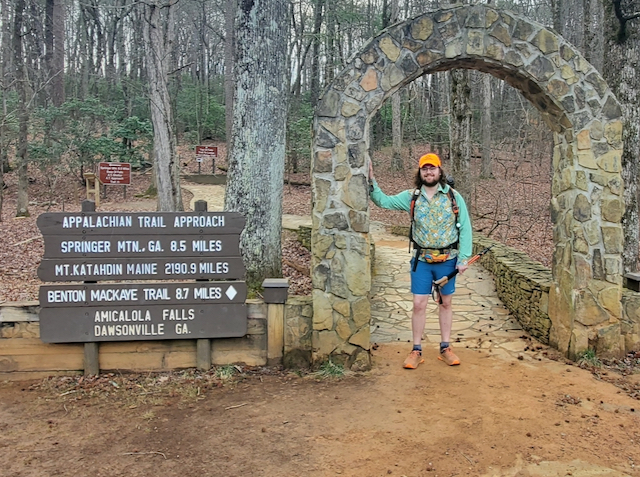
Fort Atkinson resident David Firari begins a 2,200-mile, through-hike on the Appalachian Trail. The first leg of the journey for northbound hikers requires an 8.5-mile hike on an approach trail which begins in Dawsonville, Ga. Firari began the trip on Feb. 21, at 9 a.m.

Monroe, Wis., resident Jacob Keeffe, who also is David Firari’s cousin, checks out a three-sided shelter in Georgia. Keeffe hiked with Firari during the first 50 miles of the trail before returning to Wisconsin. The two slept in tents alongside two other trail hikers on their first night. Firari said they avoided the trail’s shelters in Georgia because they have a reputation for having mice. Campers ofter arrive at the shelters and sleep nearby in tents to take advantage of latrines and water sources provided at the shelters, Firari said.
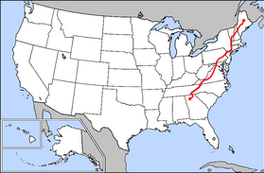
A red line shows the full 2,200-mile stretch of the Appalachian Trail. Hikers can begin at the southern terminus in Georgia or the northern terminus in Maine. The full trail moves through 14 states. Public domain image.

A “white blaze,” at left, is among marks that indicate to hikers that they are on the Appalachian Trail. Firari said the trail, although sometimes intersected by other trails, is well marked. Offering some observations, Firari said people of all walks of life were hiking the trail. He described many as people in their 20s and those who are retired. About 60 to 70% of the people he met were men.
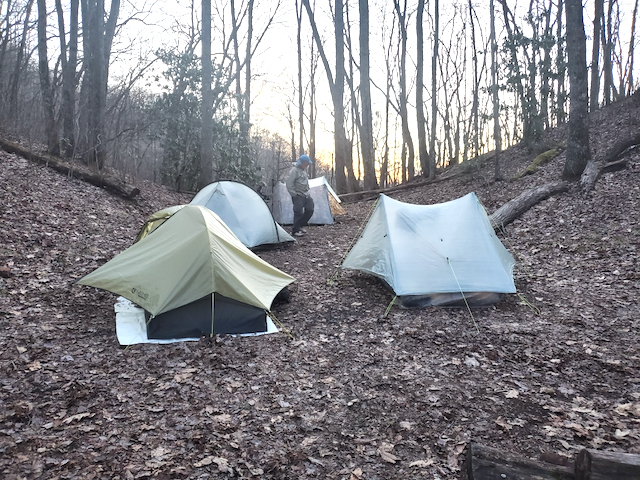
Hikers pitch tents together. According to Firari, hikers often form groups on the trail called “tramlies.” Individuals within the groups make plans to meet in certain spots each night to cook and camp together. The practice allows each hiker to travel at his or her own pace, while also enjoying a buddy system.
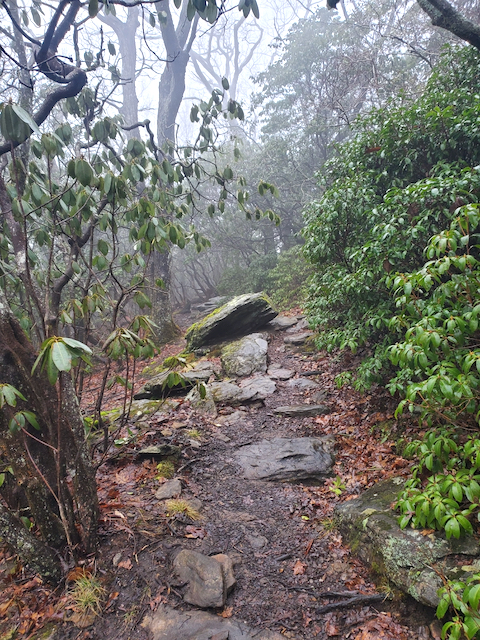




Five photos above: Terrain and weather offer changing conditions along the Appalachian Trail. In February, in Georgia, top two photos, Firari said he felt like he was in the mountains and he could see through the trees. Still, he said, the trail is called “the green tunnel,” describing its wooded nature. While hikers work for their views, he said, he found the best vistas along the border between North Carolina, three photos above, and Tennessee.
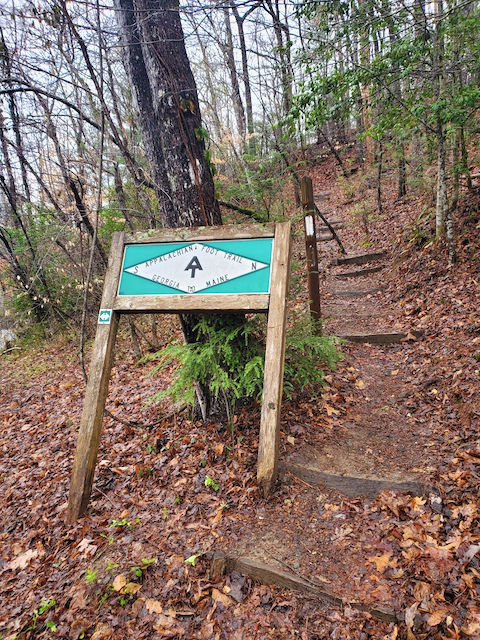
Signage marks the Appalachian Trail near the Fontana Dam in North Carolina.
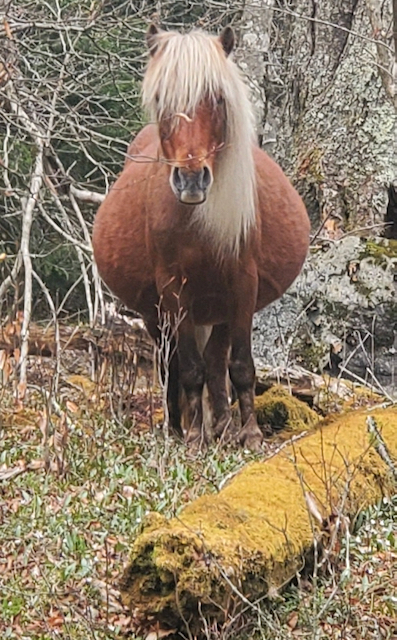
A pony grazes in the Grayson Highlands of Virginia.

David Firari climbs through rocks in the White Mountains of New Hampshire.
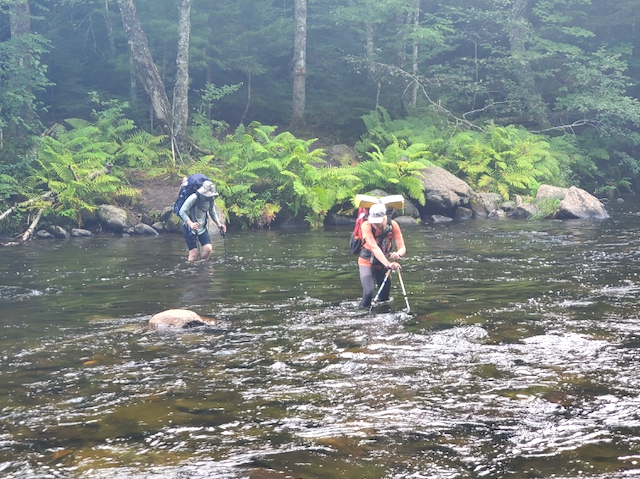
Hikers traveling with David Firari cross the Hundred Mile Wilderness in Maine.

David Firari reaches the northern terminus of the Appalachian Trail atop Mount Katahdin, Maine. He arrived on Aug. 29 at noon.

David Firari greets customers from behind the counter at Planet Chaos, a comic and gaming store in Fort Atkinson. Having served as a part-time employee at the store since high school, he has returned to life as he knew it before embarking upon a more than 2,200-mile hiking adventure on the Appalachian Trail. His journey began in February and ended in August. Kim McDarison photo.
This post has already been read 1869 times!
Kim
Our Advertisers
Most Read Posts
- No results available